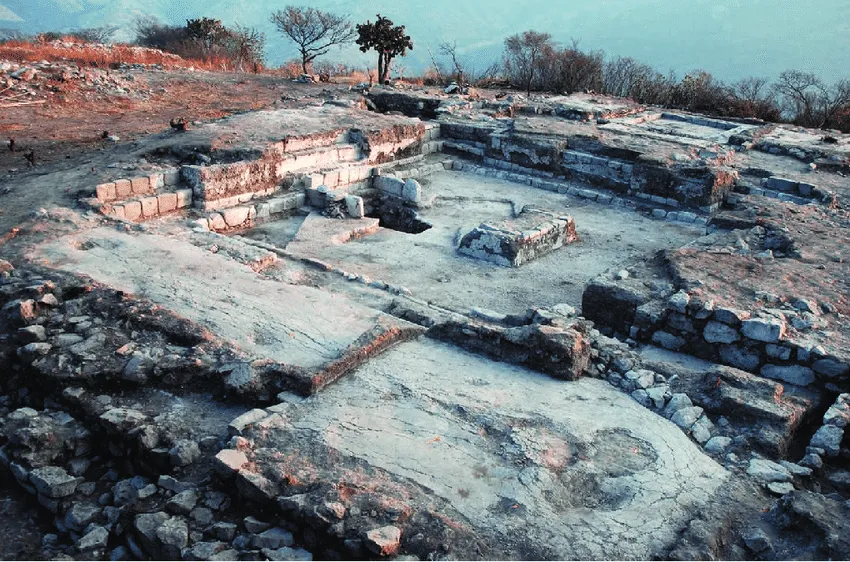El Palmillo: A Window into Zapotec Civilization
El Palmillo archaeological site, located in Mexico’s Oaxaca Valley, offers a fascinating glimpse into the pre-Columbian Zapotec civilization. Renowned for its intricate urban planning and sophisticated culture, the Zapotec people left behind a legacy that El Palmillo helps us understand. Terraces, a complex water management system, and remnants of domestic structures provide valuable insights into the daily lives of its inhabitants.
Get your dose of History via Email
History, Use, and Decline
Archaeologists led by Gary Feinman and Linda Nicholas discovered El Palmillo in the late 20th century. The Zapotec civilization, flourishing from around 500 BC to 750 AD, constructed the site, which eventually evolved into a bustling urban center. Its strategic location offered control over trade routes and resources. While the Zapotec were the primary builders, other Mesoamerican cultures may have influenced the site’s development. El Palmillo’s history reflects the region’s dynamic past, with evidence of various phases of occupation and use.
The site’s architecture and artifacts suggest it was a significant economic hub within the broader Mesoamerican trade networks. The Zapotec people, skilled traders and artisans, left behind a wealth of pottery, tools, and other artifacts that offer clues to their daily lives. El Palmillo’s decline coincides with the fall of the Zapotec state, but the exact reasons for its abandonment remain a topic of debate among archaeologists.
El Palmillo’s importance extended beyond economics. The presence of platforms and buildings suggests a strong ceremonial significance. These structures indicate that El Palmillo served not only as a center of commerce but also as a spiritual center for the Zapotec, known for their religious practices including ancestor worship and complex rituals.
Over time, El Palmillo fell into disuse and was reclaimed by nature. However, its rediscovery has shed light on the Zapotec’s sophisticated urban planning. The site’s layout, with its terraces and water management systems, reflects a deep understanding of engineering and environmental adaptation. This knowledge allowed the Zapotec to thrive in the Oaxaca Valley’s challenging terrain.
Today, El Palmillo stands as a testament to the ingenuity of the Zapotec civilization. It offers valuable insights into pre-Columbian Mesoamerican life, and ongoing archaeological studies aim to uncover more about the people who built and inhabited this ancient city.
Unveiling El Palmillo’s Secrets
El Palmillo is notable for its extensive terracing, transforming the rugged hillside into a suitable living space. These terraces supported domestic structures made from local materials like stone foundations and adobe bricks. The site’s buildings showcase the architectural prowess of the Zapotec, with some structures featuring multiple rooms and evidence of plastered walls and floors.
El Palmillo’s water management system is particularly impressive. The Zapotec engineers designed an intricate network of channels and cisterns to collect and distribute rainwater throughout the settlement. This system was crucial for supporting the population and agricultural activities, highlighting the Zapotec’s advanced understanding of hydraulics.
Archaeological excavations have unearthed a variety of artifacts, including pottery shards, obsidian tools, and decorative items like beads and jewelry. These artifacts reflect the daily activities and trade connections of the inhabitants, offering a glimpse into the artistic sensibilities of the Zapotec culture.
The layout of El Palmillo suggests a well-organized urban plan. The central area likely served as a public space or marketplace, while surrounding residential zones hint at a degree of social stratification. The presence of luxury goods in some households points to wealth disparities within the community.
A Legacy that Endures
Despite the passage of time, the ruins of El Palmillo continue to hold a captivating allure for visitors and researchers alike. The site’s preservation allows for ongoing study and conservation efforts, ensuring this cultural heritage is protected for future generations to appreciate and learn from.
Mysteries and Interpretations
Several theories surround the use and significance of El Palmillo. Some scholars believe it functioned primarily as a residential area, while others argue for a strong commercial and ceremonial role. The presence of public spaces and marketplaces supports the idea of a multifaceted urban center.
The reasons behind El Palmillo’s decline and abandonment remain shrouded in mystery. Environmental changes, resource depletion, political upheaval, or conflict are all possibilities currently under investigation. Interpretations of the site’s artifacts and structures often rely on comparisons with other Zapotec sites, helping to piece together a broader picture of the civilization’s culture and economy.
Dating techniques like radiocarbon dating and stratigraphy have established a timeline for El Palmillo’s occupation and helped provide context for the artifacts found within the site’s layers. The site’s significance in Mesoamerican history continues to be a subject of ongoing research, and as new discoveries emerge, interpretations of El Palmillo may evolve. This underscores the dynamic nature of archaeology and the importance of El Palmillo in understanding the past.
At a glance
Country: Mexico
Civilization: Zapotec
Age: Approximately 500 BC to 750 AD


